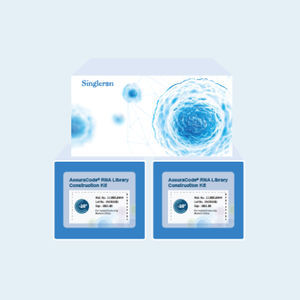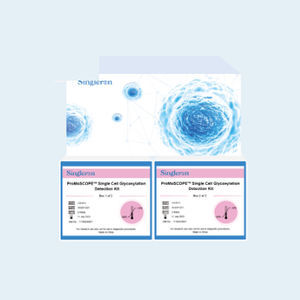
- Laboratory
- Laboratory medicine
- Solution reagent
- Singleron Biotechnologies
Solution reagent kit sCircle®for autoimmune diseases
Add to favorites
Compare this product
Characteristics
- Type
- solution
- Applications
- for autoimmune diseases
Description
Using Singleron's GEXSCOPE® technology, single cells are partitioned into individual microwells, and mRNAs are captured by uniquely barcoded beads. The mRNA are then reverse transcribed into cDNA, followed by a circularization step introduced by a circle handle. By circularization of cDNA, the V(D)J region was brought closer to the sequencing primer. After two rounds of enrichments, the products will be fragmented and constructed for full length VDJ library for illumina short-read sequencing.
High RNA capturing efficiency and V(D)J specificity
VDJ recombination is the process by which T cell and B cells randomely assemble different gene segments – known as variable (V), diversity (D) and joining (J) genes – in order to generate unique receptors (known as antigen receptors) that can collectively recognize many different types of molecule. The V(D)J region is one of the most highly diversed region on human genome, contributing to complex human immune responses. Therefore understanding the full length sequences of T and B cell V(D)J regions provided a more precise understanding towards the immune processes.
Highlights:
- Comprehensive - combine transcriptome profiling with full-length TCR or BCR sequences
- High throughput - simultaneously process up to 10,000 cells in a single run
- High mapping rate - increase the proportion of cells with full-length V(D)J sequences
- High capturing efficiency - take advantage of the robust polyA capture
Applications
01
Immune Microenvironment
Tumor Infiltrating T and B cells
02
Autoimmune Diseases
Identify abnormal T and B cells in Immune System
03
Transplantation
Identify rejection risks for transplantation
Catalogs
No catalogs are available for this product.
See all of Singleron Biotechnologies‘s catalogsRelated Searches
- Solution reagent kit
- Molecular biology reagent kit
- Research reagent kit
- Protein reagent kit
- Diagnostic reagent kit
- Enzyme reagent kit
- Histology reagent kit
- Microbiology reagent kit
- Tissue reagent kit
- NGS reagent kit
- Gene reagent kit
- Enzymatic reagent kit
- Animal-based reagent kit
- Fungi reagent kit
- Pathology reagent
- Mutation detection reagent kit
- RNA Synthesis reagent kit
- Drug reagent
- Yeast reagent kit
*Prices are pre-tax. They exclude delivery charges and customs duties and do not include additional charges for installation or activation options. Prices are indicative only and may vary by country, with changes to the cost of raw materials and exchange rates.











